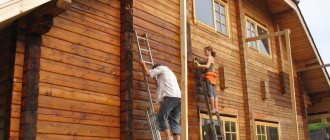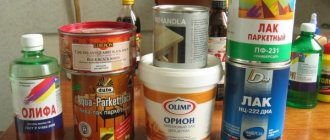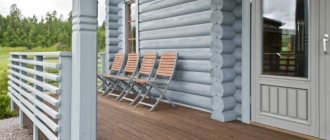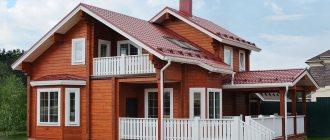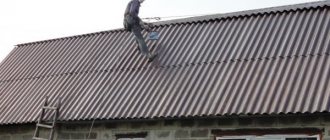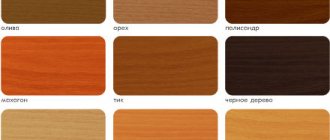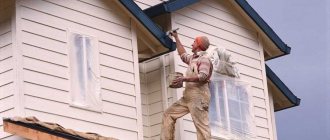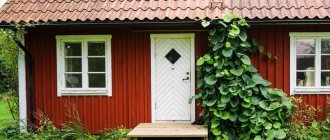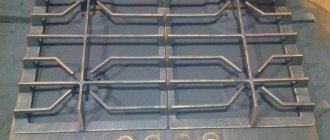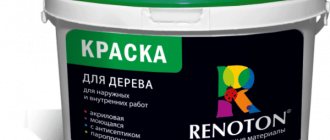- March 20, 2019
- Country house
- Marina Lobacheva
Wooden buildings are environmentally friendly, affordable and comfortable to live in. But wood is a rather complex material that is exposed to numerous atmospheric factors. It accumulates moisture, is destroyed by insects, and also often molds. Therefore, to protect a wooden structure, it is important to use some construction tricks to extend the life of the building. To do this, you need to use different paints or covering materials. Typically, building owners think about what kind of paint is best to paint the outside of a wooden house in order to improve its appearance and ensure its reliable protection. To do this, you can use different compositions that have their own unique characteristics.
Specifics of wooden buildings
Wooden houses are often chosen by many citizens to create a place for permanent residence. But it is important to remember some specific features of such houses. These include:
- the structure is lightweight, so it can be built on light and inexpensive bases;
- wood has the ability to allow air to pass through, so residential premises provide a favorable living environment for citizens;
- wooden houses have good thermal insulation parameters, so they do not require expensive insulation;
- before using such a structure, it is recommended to wait about two years until the shrinkage ends;
- since the material has good vapor permeability, it is important to use either ventilated facades or special coloring solutions for its finishing;
- It is additionally important to constantly use fire retardants, since wood is a flammable material;
- the tree is often damaged by insects and therefore needs specialized protection.
To protect the building from many negative factors, specialized facade paint is used. To do this, you need to choose compounds that are ideal for wood. They can be created on the basis of different components, so their parameters and costs can differ significantly.
How to choose paint?
Every owner of a wooden building should understand how to paint the outside of a wooden house. The service life, appearance and parameters of the house depend on this. When choosing the right composition, the following requirements for paint are taken into account:
- it must be specifically designed for facade work;
- it cannot contain any toxic or harmful components;
- No harmful compounds should be released into the air;
- the coating created must be resistant to various atmospheric influences;
- you should choose only paints that create a plastic coating, since it will be resistant to constant changes in temperature;
- the material must be wear-resistant.
To paint wooden walls, you can use innovative or traditional materials. They differ in composition, properties and cost. Therefore, each owner of such a structure must take a responsible approach to choosing durable wood paint for exterior use. The most commonly chosen compositions are oil, alkyd, acrylic or polyurethane.
Acrylic paint
If the owner of a building is thinking about how to paint the outside of a wooden house, then acrylic paint would be an excellent choice. The main parameters of this composition include:
- the created coating is characterized by excellent resistance to various atmospheric influences, such as temperature changes, strong winds, rain or snow;
- wood is protected from ultraviolet radiation;
- as a result of applying such paint, a special film is formed that has good elasticity, so even during the process of shrinkage of the house, cracks do not appear on the walls;
- the coating allows air to pass through well, which is important for a wooden residential building;
- the material dries quickly, but the duration of this process depends on the humidity and type of wood;
- a coating made from acrylic paint retains its color and characteristics for 8 years, and during this period of time you will not have to waste time and money on updating the film.
The disadvantages of acrylic paint include its high cost. The composition is available in different colors, so you can choose the most optimal solution for your existing residential building.
Reasons for the need to stain wood
Why is it generally necessary to treat wood with various paints and varnishes? It would seem that the natural texture of wood is attractive in itself, and in most cases there is no particular need to embellish it? And all this is due to the fact that impregnation and painting of wood is capable of preserving its physical and aesthetic properties for the longest possible time, such as integrity, strength, warmth, environmental friendliness of the material and the beauty of its textured pattern.
As you know, the first enemy of wood is moisture, which, when it penetrates the structure of the material, has a destructive effect on its fibers. As a result, they swell and deform, losing elasticity and strength. Inside a house with damp walls, various fumes that are unpleasant for the senses inevitably dominate, which easily permeate the structure of the wood. In addition, dampness always “kicks off” the biological decomposition of wood, causing the appearance of mold and blue stains, which, in turn, in addition to creating an unhealthy atmosphere in the premises, also weaken the strength of the building material.
Paint and varnish products, as well as special protective compounds, are primarily designed to protect wood from negative external influences and preserve its structure from destruction. And, of course, the task is always to preserve the aesthetic texture of the wood unchanged or to decorate it in accordance with the intended interior design.
Oily
Oil paint for exterior woodwork is used by many owners of such structures. Its parameters include:
- the created coating is resistant to various atmospheric influences;
- the wood is protected from moisture;
- the paint has excellent penetrating ability, so the material is absorbed by the wood;
- If the painting procedure is carried out correctly, the result will be a glossy finish with a service life of at least 6 years.
The disadvantages of this solution include a long drying time, so it usually takes about a day. Painting wooden walls must be done in good weather.
Selection of façade paint by manufacturer
When choosing paint to renovate a facade, you will come across a huge variety of paint and varnish products - silicate, acrylate nanopaints, silicone, oil, etc., which are offered by numerous manufacturers. To at least somehow get your bearings, let’s make a rating of the most popular ones.
- "Belinka" (Belinka) Slovenia - decorative paints for exterior use, characterized by high penetrating ability. Price for 1 liter ≈ from 525 rubles.
- "Tikkurila" Finland - silicone-modified facade paints, acrylate, oil and base paints, are distinguished by their high safety and longevity, which makes the use of these paints very profitable. Price for 1 liter ≈ from 376 rubles.
- "Alpina" Germany - the products of this company are intended for people who have no experience in painting work. Low cost and detailed instructions for use have made these paints the most popular in Germany. Price for 1 liter ≈ from 345 rubles.
- "Neomid" Russia - premium class products are excellent for painting new wood surfaces and previously painted ones. Price for 1 liter ≈ from 238 rubles.
- "Senezh" (Russia) - high-quality tinted antiseptics with the addition of natural oils and UV filters. When applied, they do not leave smudges and are resistant to solar radiation. Shelf life up to 7 years. Price for 1 liter ≈ from 340 rubles.
- Teknos Finland - quick-drying, odorless paints. In Russia, such lines as “Biora Balance”, “Kirye”, “Vintol”, etc. are in demand. Price for 1 liter ≈ from 760 rubles.
- “Rogneda” (Russia) - super-elastic paints that dry well, form a silky, perfectly smooth coating, and have a crack-free shelf life of at least 10 years. Price for 1 liter ≈ from 150–160 rubles.
- Zobel (Germany) - Zobel has been in the building materials market for more than 60 years. The products are characterized by environmental friendliness, safety and low consumption to achieve first-class results. Price for 1 liter ≈ from 770 rubles.
- Dulux (England) - durable, made by combining environmentally friendly water-based paints with durable alkyd coatings. Well-breathable, quick-drying, contain additives against rot and mold, are characterized by high adhesion to the surface and a wide variety of colors. Price for 1 liter ≈ from 739 rubles.
- Yaroslavl Paints (Russia) - the company specializes in the production of tinted glossy varnishes for facade work that imitate the natural structure of wood. Price for 1 liter ≈ from 200 rubles.
We advise you to study - Do-it-yourself technology for laying laminate diagonally
Alkyd
It is quite difficult to say exactly which paint is best to paint the outside of a wooden house, since there are many different solutions that have their own positive parameters. Alkyd paint is considered a rather interesting choice. This composition is based on resin, so the main parameters of the paint include:
- the created coating is heat-resistant, so even when heated to 90 degrees, all the positive parameters of the material are preserved;
- alkyd paint is ideal for wood;
- the coating has a long service life.
It is necessary to apply the solution only to a surface that has been carefully prepared in advance, for which it is important to dry it well, otherwise the resulting coating will quickly begin to bubble and then swell. It takes about 12 hours for this composition to dry completely.
Latex
This type of facade paint appeared on the market relatively recently, but quickly became popular among owners of wooden houses. Features of the solution include:
- Latex-based paint is created, which guarantees its high ductility;
- the resulting coating easily allows air to pass through, so the main advantage of wooden buildings, which is their vapor permeability, does not disappear;
- the solution is not toxic, so you can create a coating without a respirator or other protective equipment;
- even if the paint is applied with a regular brush, an even and high-quality coating will be created.
The film obtained using latex paint can be cleaned even with the help of various detergents. This coating lasts on wooden walls for more than 10 years.
Work technology
Preparatory work
If you decide to paint or varnish wooden wall cladding, then the instructions given in this section will help you understand the nuances of the technology.
Work must begin with surface preparation:
- If the boards were previously painted or varnished, then the old coating must be removed. We soften the painted layer with warm water or a stream of hot air from a hair dryer, and then remove it with a spatula.
- We remove the remaining paint and varnish using a sanding machine.
- If we process new wood, then it needs to be sanded all the more. To do this, we successively use several abrasive materials, gradually reducing the grain size - this way we get a perfectly flat surface.
The surface must be sanded before painting or varnishing.
Advice! If there are defects on the casing, then before sanding they need to be masked by using a small amount of wood putty. After waiting for the putty to dry, we clean the area with sandpaper, and then sand the surface.
- After filling and sanding the wood, it makes sense to treat all surfaces with a penetrating antiseptic water-based primer.
- Apply the primer in one or two layers, making sure that the wood does not get too wet.
- After the primed surface has dried, the lining inside the house can be painted or varnished.
Putty for filling defects
Application of the composition
Both painting and varnishing can be done with your own hands.
The process itself is not complicated, but there are still a few recommendations that are worth listening to:
- Having decided how to treat the wood inside the house, it is worth purchasing the selected composition with a small margin. The thing is that the shade of paint or tinted varnish may differ in different batches, so it is better to paint everything with one material.
- Before starting work, mix both paint and varnish thoroughly. This is done in order to compensate for the delamination of components that occurred during storage.
We advise you to study - How and with what to cut laminate - the choice of tools and the nuances of sawing laminated coverings
Apply varnishes and paints with a brush in several layers
- To apply the composition, use a wide flat brush. We will also need a narrow brush on a long curved handle - we will use it to penetrate hard-to-reach places.
- We apply both paint and varnish in several layers. The more layers and the smaller their thickness, the better the result.
- The direction of the strokes should be perpendicular. So, for example, we apply even layers vertically, odd ones horizontally, or vice versa.
- After applying each layer, you need to dry the surface. Drying time depends on the type of composition used, so you need to plan the work individually.
We dry the treated surfaces at a constant temperature without drafts.
And most importantly, during drying, the fresh layer of finishing should be protected from exposure to drafts and temperature changes, otherwise the coating will quickly begin to crack and peel off.
When choosing how to treat the inside of a wooden house, you need to analyze which properties of the material will be your priority. Well, information materials, including a very informative video in this article, will help you understand the intricacies of applying paints, varnishes and impregnations.
Rubber
This paint for painting the outside of a wooden house is similar in consistency to regular mastic. Composition characteristics include:
- the material is environmentally friendly, since no toxic or harmful components are used in the process of its creation;
- strength is due to the presence of acrylate latex;
- the coating is resistant to temperature changes;
- good adhesion to a wooden base is ensured;
- the material does not ignite, which is important for wooden buildings;
- the composition contains no toxic components.
If the coating is created in warm and dry weather, the material dries literally within two hours. The created film retains its performance parameters for 10 years.
What to choose?
It is simply impossible to say exactly which of the above solutions is the best paint for painting the outside of a wooden house. This is due to the fact that each composition has both advantages and some disadvantages.
To preserve the original appearance of the house, you can use not paints, but various impregnations, varnishes, stains or waxes. Each solution has its own purpose, but it is important to use fire retardants and antiseptics. These compounds are intended to protect wooden surfaces from fire and insects.
Painting wood while maintaining texture
A pronounced wood pattern can be achieved using glaze, pigmented oil or wax. These compounds apply quite tightly, almost painting over the structure of the wood fibers. Any of the compositions described above can be applied with a brush or roller.
When applying paintwork materials, take very little, first applying them in fragments along the entire length of the lining. Then, using a brush or roller, the applied strokes are shaded over the entire surface. After leaving them to soak for 5-10 minutes, to reveal the texture, take a soft, lint-free cloth and remove most of the oil. As a result, the pattern appears much brighter than in its original state: a larger amount of pigmented product is retained in the grooves, and almost none remains on the protruding parts. The result is a pronounced texture. This technique is also called brushing or texturing the lining. In interiors, wood processed in this way looks very decorative: both on the walls and on the ceiling.
The process can be observed in the video. Three samples were painted: two with the same oil with pigment, one with colorless. 5 minutes after painting, one of the pigmented blanks is wiped to reveal the design. To preserve the wood after the pigment has dried (24 hours or more, read on the packaging), the lining is coated with two layers of colorless oil (glaze, wax). In areas of intensive use, you can also coat it with matte varnish.
The most popular compositions
There are several options for painting the outside of a wooden house. A specific method is selected only after suitable paint has been purchased. What paint is best to paint the outside of a wooden house? It is most preferable to buy the following types of compounds:
- Finnish paint "Tikkurila", which can be alkyd-urethane or polyurethane-acrylate. It contains antiseptics and does not contain harmful components. The coating lasts more than 10 years, and you can also choose the composition of a suitable color from 120 options. The paint dries in 4 hours, and the cost of 1 liter is approximately 800 rubles.
- “Belinka” is represented by Slovenian facade paint, which protects wooden walls from fungus, insects and mold. If you properly apply the composition to the base, the coating will last more than 15 years. On average, the cost of 1 liter ranges from 600 to 900 rubles.
- "Drevoplast" is a company that creates various antiseptic products designed to effectively protect wood from numerous negative influences. Impregnation can be used not only outside, but also directly in residential premises.
- Teknos paints have a high cost, which is due to the long service life of the coating. If the paint is applied taking into account numerous requirements, the film will last about 30 years. Typically, this composition is chosen to cover houses built from expensive wood.
There are many other types of paints on the market. They have different parameters, prices and shades. What paint is best to paint the outside of a wooden house? You can choose any option, so the buyer must focus on his preferences, financial capabilities and characteristics of the composition.
Preparing the house for painting
The first step is to inspect the entire structure.
If the inspection reveals logs that are rotten and severely damaged by fungus, they will have to be replaced. If the wood has not yet been damaged, areas covered with mold can be preserved. In this case, moldy areas are treated with an antiseptic. A darkened surface can be bleached using special bleaching compounds. For the same purposes, ordinary cheap white is suitable, which will provide the same effect as more expensive special means. Large and small cracks are sealed with acrylic-based putties for exterior use. If the surface is to be painted in the future, putty of any color is suitable; under the varnish coating it is better to use products that match the wood.
Main stages of preparatory work:
- Old peeling paint is cleaned off with a wire brush or spatula. You can also use chemicals designed to clean the surface. The mechanical method is faster, and the chemical method takes longer, but is more effective. After chemical treatment, the old log structure will look like new.
- Uneven and rough surfaces are sanded to good light wood. To do this, use a grinder with a special attachment. If there are any unevenness left on the wood after sanding, they are smoothed out with coarse sandpaper.
- Next, a primer is applied. To protect wood from the appearance of fungus and mold, it is better to paint it with a primer composition with antiseptic additives. It is advisable to use a primer that matches the color of the paint that will be used to paint the house.
Preparing the walls
As soon as you choose how to paint the outside of a new wooden house, it is important to prepare the walls of the building for the upcoming procedure. Preparation is required for new and old buildings. To do this, perform the following steps:
- Initially, dirt or dust is removed from the walls, for which you can simply wipe the walls with a dry cloth or rinse the base well;
- if there are traces of mold, then the necessary areas of the surface are treated with special compounds that destroy spores;
- if tree resin is detected, it is removed, after which the damaged areas are covered with varnish;
- If there are nails or other metal fasteners in the walls, they must be coated with a special primer designed for working with metal surfaces.
Next, you need to dry the walls well, for which the structure must stand in the sun for at least two weeks. Therefore, it is best to carry out the staining procedure in the warm part of the day.
How to properly paint the outside of a wooden house?
The coloring procedure is not considered too complicated or time-consuming, so anyone can handle it, regardless of any specific experience. To do this, after preparation, the following steps are implemented:
- the walls are covered with a primer, and you need to choose compounds that contain antiseptics and fire retardants;
- after the primer has dried, the preparation of the coloring composition begins;
- It is important to stir the paint regularly while working;
- The material can be applied with a spray gun or brush;
- to obtain a uniform, high-quality, colorful and rich shade, it is recommended to use color;
- It is not allowed to work in the sun, so it is best to carry out the process in the evening;
- dyeing is carried out in warm and dry weather;
- compositions are applied along wood fibers;
- It is advisable to form several layers at once, with each layer applied only after the previous layer has completely dried.
Before using any composition, it is important to make sure that the solution is not expired, otherwise a poor-quality and short-lived coating will be obtained.
Renovating an old house
As a special case of restoration work, we will consider the option of updating the facades of houses that have a long service life. This situation differs from that described earlier in that the choice of dye in this case depends on the coating previously used, as well as on the condition of the walls themselves.
Before choosing a suitable dye for the facade, you should take into account that oil paint “fits” well on any other type of paint, while painting in the reverse order is unacceptable.
That is why, before using another type of dye, it is necessary to completely remove the layer of oil paint with which the facade was previously painted. Naturally, if you reuse oil paint, this is not necessary.
Note! When updating such a coating, you should not rush to change it over the entire area of the facade. The same experts recommend that you first carry out a test repainting in some not too noticeable part and, based on the results of this test, judge the admissibility of a combination of old and new dyes.
To visually determine the type of dye used previously, you should pay attention to the following features of the coatings:
- Acrylic coatings, as they age, take on the appearance of a rolled-up “skin” and crack along the fibers of the wooden base;
- Over time, oil paint cracks in the transverse direction and in appearance resembles rectangular fragments that crumble when touched.
Renewing the coating of buildings with long service life is carried out in the following sequence:
First, the surface of the facade is thoroughly cleaned of all peeled and swollen layers of paint. For these purposes, both mechanical improvised tools (scraper, spatula or cutter) and special “washing off” chemical solutions can be used.
Video: Paint remover
Next, you should wet the wood material well and then wait until it dries completely (for these purposes, it is best to use an alkali-based cleaning solution).
After this, mold-damaged areas are treated with special protective agents. Painting the prepared surface is carried out according to the previously described method.
Important! If severely rotten and damaged elements of the façade covering are detected, they must be removed and replaced with new ones.
In conclusion, we note that restoring the facades of a wooden house, taking into account the correct choice of the right type of dye, will allow you not only to completely update the appearance of your building, but also to significantly extend its service life.
What mistakes are made?
If the owner of the building prefers to independently engage in work related to covering wooden walls with protective compounds, then he should know how to paint the outside of a wooden house. The design needs to be thought out in advance to achieve an attractive finish. But at the same time, citizens often make the following mistakes:
- not much attention is paid to the preliminary preparation of the wood base;
- For old houses, sanding of walls is not used;
- the correct paint application technology is violated;
- the temperature regime is not maintained during operation;
- paint is applied to damp wood;
- materials that are not suitable for wood are selected.
Such errors lead to the fact that the created coating does not protect the base and does not last too long. Therefore, before performing work, it is important to study the rules for its implementation.
